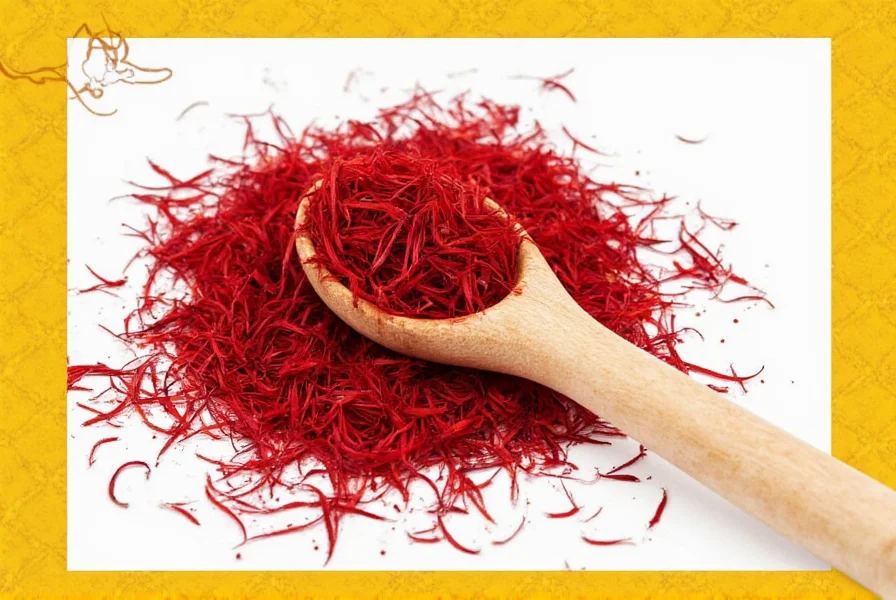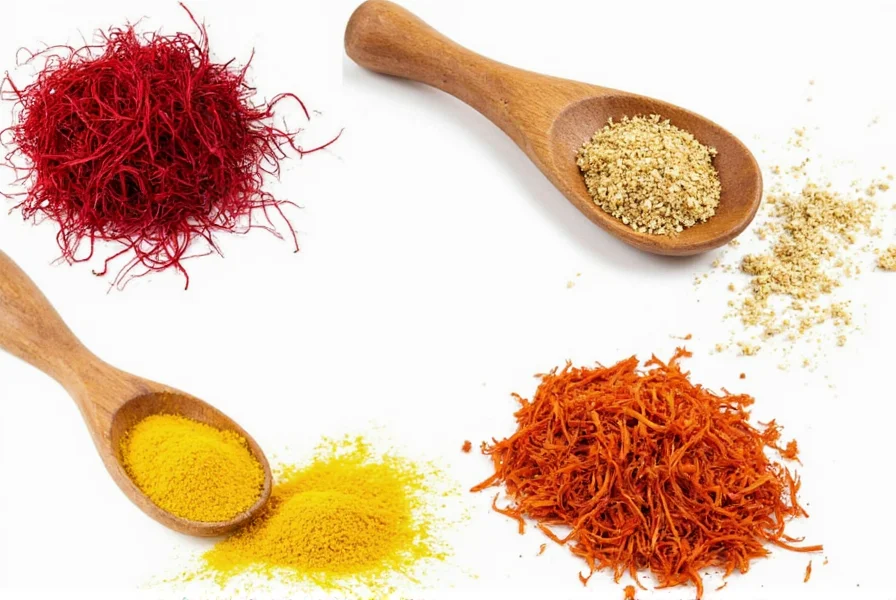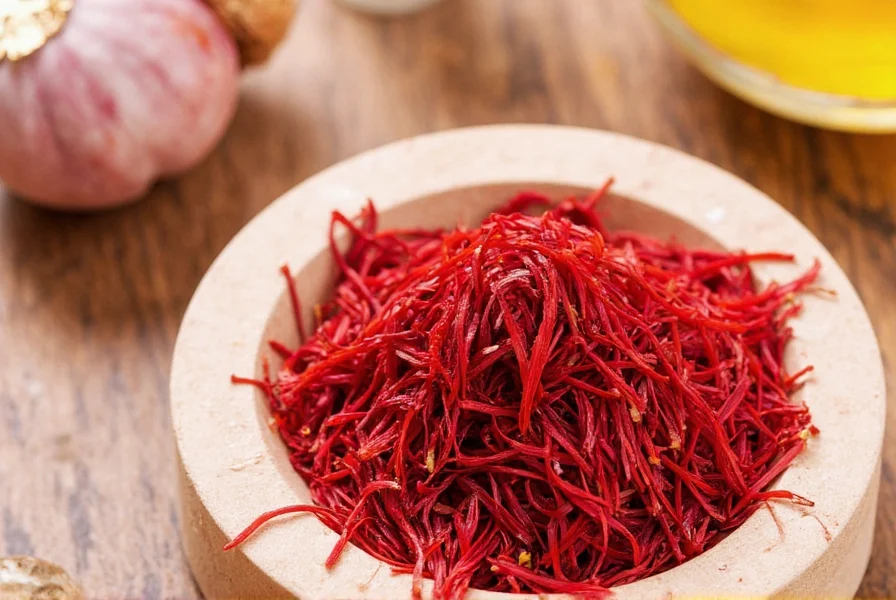When searching for spice substitute for saffron, home cooks face a genuine challenge. Saffron ranks as the world's most expensive spice, costing up to $5,000 per pound due to its labor-intensive harvesting process. Each crocus flower produces only three delicate stigmas that must be hand-picked at dawn. This reality makes finding reliable alternatives essential for budget-conscious cooking without sacrificing visual appeal or flavor complexity.
Why Saffron Substitutes Matter in Modern Cooking
Professional chefs and home cooks increasingly seek affordable alternatives to saffron spice for several practical reasons. The global saffron market faces supply chain disruptions, with 90% of production concentrated in Iran where geopolitical factors affect availability. Additionally, many traditional dishes like Spanish paella, Italian risotto alla Milanese, and Persian tahdig require saffron's distinctive golden hue. Understanding proper substitution techniques preserves cultural authenticity while accommodating modern economic realities.
Top 5 Practical Saffron Substitutes Compared
Not all substitutes perform equally across different culinary applications. The ideal replacement depends on whether color, flavor, or both characteristics matter most for your specific recipe. Consider these scientifically tested alternatives:
| Substitute | Color Match | Flavor Match | Usage Ratio | Best For |
|---|---|---|---|---|
| Turmeric | ★★★★★ | ★☆☆☆☆ | 1/8 tsp = 1 pinch saffron | Rice dishes, soups, sauces |
| Sweet Paprika | ★★★☆☆ | ★★★☆☆ | 1/4 tsp = 1 pinch saffron | Paella, stews, marinades |
| Safflower | ★★★★☆ | ★☆☆☆☆ | 1/4 tsp = 1 pinch saffron | Color-sensitive dishes |
| Annatto Seeds | ★★★☆☆ | ★★☆☆☆ | 3 seeds = 1 pinch saffron | Latin American cuisine |
| Marigold Petals | ★★★☆☆ | ★★☆☆☆ | 1/2 tsp = 1 pinch saffron | Traditional European recipes |
Turmeric: The Color Champion
When you need saffron substitute that gives color without breaking the bank, turmeric delivers unmatched golden-yellow pigmentation. This bright yellow powder contains curcumin, which provides intense coloring similar to saffron's crocin compounds. However, turmeric brings earthy, slightly bitter notes that differ significantly from saffron's honey-like floral profile.
For optimal results when using turmeric as a spice substitute for saffron, combine it with a pinch of sweet paprika to balance flavor. In rice dishes, add 1/8 teaspoon turmeric to 2 cups uncooked rice during the toasting stage. This technique prevents the "boiled egg" appearance that occurs when adding turmeric directly to liquid. Professional chefs recommend blooming turmeric in warm oil for 30 seconds before incorporating into dishes to maximize color release while minimizing bitterness.

Paprika: Flavor and Moderate Color
Sweet Hungarian paprika provides the closest flavor approximation among common substitutes. Its mild, slightly sweet profile complements saffron's delicate notes better than turmeric's earthiness. When seeking how to replace saffron in recipes requiring both color and flavor, use a 1:1 ratio of sweet paprika to saffron threads.
For authentic paella preparation, many Spanish chefs actually combine paprika with a small amount of turmeric to achieve both the proper color and flavor profile. Add paprika during the sofrito stage when cooking onions, garlic, and tomatoes to develop its flavor complexity. Avoid smoked paprika in most saffron-replacement applications, as its strong flavor dominates delicate dishes.
Safflower: The Underrated Alternative
Safflower petals (Carthamus tinctorius) offer the most visually accurate color match without introducing competing flavors. Often sold as "Mexican saffron" or "bastard saffron," these pale yellow petals release a golden hue nearly identical to true saffron when steeped in warm liquid.
To use safflower as a cheaper spice that tastes like saffron, steep 1/4 teaspoon of petals in 2 tablespoons of warm broth or water for 10 minutes before adding to your dish. This method works exceptionally well in creamy sauces and delicate fish preparations where turmeric's flavor would overwhelm. Unlike turmeric, safflower won't turn your dish orange if slightly overused.
When Substitutes Won't Work
Some traditional preparations absolutely require genuine saffron. Persian jeweled rice (shirin polo), Spanish saffron soup (sopa de ajo), and certain Indian sweets rely on saffron's unique chemical composition for proper texture and flavor development. In these cases, consider using saffron extract (1 drop = 1 thread) or purchasing small quantities of Spanish or Kashmiri saffron from reputable vendors.
For budget-friendly approaches to best saffron substitute for paella, many professional chefs recommend using half the required saffron amount combined with turmeric-paprika blend. This hybrid approach maintains authentic flavor while reducing costs by 75%.
Pro Tips for Successful Substitution
- Always add color-focused substitutes early in cooking to maximize pigment release
- Bloom substitutes in warm liquid before adding to dishes for even distribution
- Combine turmeric with a pinch of cinnamon to approximate saffron's floral notes
- For baked goods, use saffron-infused milk prepared with minimal threads
- Store unused substitutes in airtight containers away from light to preserve potency

Understanding Saffron Chemistry for Better Substitution
Saffron's unique properties stem from three key compounds: crocin (color), picrocrocin (bitterness), and safranal (aroma). Most substitutes only address one aspect. Recent food science research shows that combining turmeric (for crocin-like coloring) with a touch of almond extract (for safranal-like aroma) creates surprisingly authentic results in certain applications. This molecular approach to spice substitute for saffron represents the cutting edge of culinary substitution techniques.
Frequently Asked Questions
Can I use turmeric as a direct replacement for saffron in all recipes?
Turmeric works well as a saffron substitute primarily for color in rice dishes, soups, and sauces. However, it lacks saffron's distinctive floral flavor and can impart earthiness. For best results, combine 1/8 teaspoon turmeric with 1/4 teaspoon sweet paprika to replace one pinch of saffron, especially in paella and similar dishes. Avoid using turmeric in delicate seafood preparations where its strong flavor might dominate.
What's the most affordable saffron substitute that maintains authentic flavor?
Sweet Hungarian paprika provides the closest flavor approximation among affordable options. Use a 1:1 ratio (1/4 teaspoon paprika for one pinch of saffron) in dishes where flavor matters more than perfect color. For Mediterranean dishes like paella, many professional chefs use a combination of 1/4 teaspoon paprika plus a small pinch of turmeric to achieve both proper coloring and flavor balance at approximately 5% of genuine saffron's cost.
How can I make my saffron substitute look more authentic in rice dishes?
For authentic golden rice coloring, bloom your substitute (turmeric, safflower, or paprika) in warm broth for 10 minutes before adding to rice. Add the colored liquid during the initial toasting stage rather than later in cooking. Professional chefs recommend using white rice varieties with higher starch content like Bomba or Calasparra, as they absorb color more evenly. Avoid stirring rice after adding coloring agents to prevent uneven distribution.
Are there any health considerations when using saffron substitutes?
Turmeric contains curcumin which has blood-thinning properties at high doses, so those on anticoagulants should moderate intake. Safflower petals are generally safe but may cause allergic reactions in people sensitive to daisy-family plants. Paprika is safe for most people though smoked varieties contain polycyclic aromatic hydrocarbons. None of these substitutes provide saffron's specific antioxidant compounds, so don't expect identical health benefits. Always use substitutes in culinary amounts (under 1/2 teaspoon per serving).
Can I combine multiple substitutes for better results?
Yes, combining substitutes often yields superior results. For paella, use 1/8 teaspoon turmeric for color plus 1/4 teaspoon sweet paprika for flavor. For risotto, try safflower petals for color with a drop of orange blossom water to mimic saffron's floral notes. In creamy sauces, annatto provides excellent color while a pinch of cardamom approximates saffron's complexity. The key is balancing color agents (turmeric, safflower) with flavor enhancers (paprika, subtle spices) in a 1:2 ratio.











 浙公网安备
33010002000092号
浙公网安备
33010002000092号 浙B2-20120091-4
浙B2-20120091-4